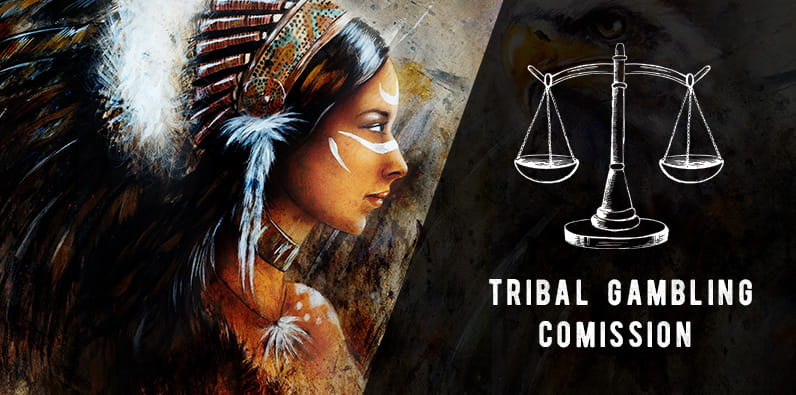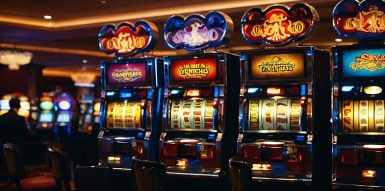
Read this blog post if you are new to the legal gambling situation in the US and if you want to learn more details about the regulatory functions of a tribal gaming commission. This blog post will also touch on the history of the different responsibilities of the tribal governments and their connection with the Indian Gaming Regulatory Act. It is always nice to know your legal rights and how a native American casino is protected when you plan to play your favourite games in such an establishment. So, stay tuned to the end of our blog post or directly find the topics that are more interesting to you by using the following buttons.
Tribal Gaming Commission Functions
First things first: let’s talk about the principal functions of a tribal gaming commission. As of 2021, there are nearly 6000 tribal gaming commissions and regulators across 29 states. They are the primary regulators of the operators of Indian casinos and gambling establishments. The tribal gaming commission functions are mainly related to the support of these Indian gaming operators in terms of regulation and application of the rules applied by the NIGC.
For example, when an operator of a tribal gambling establishment in Western North Carolina wants to apply for a license or when he needs assistance in the accomplishment of his responsibilities under NIGC, then he could call the Cherokee Tribal Gaming Commission. If an operator is based in Fort Lauderdale, Florida, then he could search for the assistance of the Seminole Tribal Gaming Commission. The Indian Gaming Regulatory Act of 1988 provides a lot of mandates for fulfilment, and the close coordination of NIGC with these tribal-state commissions is the way to do it justice. Here is a list of the main tribal gaming commission functions:
- Provides administrative support to NIGC.
- Helps tribe’s gaming operators fulfil the requirements under the IGRA.
- Performs technical analysis of gaming results and disputes.
- Supports the tribe’s gaming operators with regulatory oversight.
- Investigates for frauds, corruption, organized crime, gaming abuse.
- Monitors the compliance of the licensees.
- Issues, suspends, revokes and renews gaming licenses.
- Monitors the assets of the tribe’s gaming operators.
- Establishes partnerships with local casinos, hotels and other facilities.
- Preserves cultural assets and promotes environmental sustainability.
- Promotes tribal economic development.
- Budget and payroll management.
- Supports and assists in special projects and communication programmes.
- Performs various types of audits.
- Inventory control and contract management.
Of course, these are only the main functions of a tribal gaming commission. Each tribal authority has different requirements and responsibilities to one extent or another. There are no two identical tribal-state jurisdictions. Overall, each of these agencies has the goal to preserve the tribal assets, as well as to protect and to ensure the safety of the members of the gaming facilities. You can check out more details in the next section, where we will tell you more about the development of the tribal governments and their regulatory approach towards tribal gambling.
History and Role of the Indian Gaming Regulatory Act

The Indian Gaming Regulatory Act of 1988 establishes a federal gaming structure for the first time in the US. The main purpose of the Act is to promote tribal development and the integrity of the tribal gambling operators by ensuring that the benefits from the gaming activities will go to the tribes. The Act was enacted in one of the most important moments in the US history of gambling and it set out major developments regarding the gaming framework on a federal basis.
This is the main law that regulates gaming on Indian lands and sets the statutory limits of the Native Indian Gaming Commission and, hence, of each tribal gaming commission. After this federal law was adopted by Congress in 1988, it went through several changes related mainly to the statutory limits of the collected annual fees. There are more details in the next list:
| 📅 Year | 📜 Developments of the Indian Gaming Regulatory Act of 1988 (IGRA) |
|---|---|
| 1998 | The Interior Appropriations Act expands the limit of collected annual fees to $8 million. Before that year, the statutory limit was $1.5 million on an annual basis. |
| 2006 | Based on the Native American Technical Corrections Act of 2006, Congress approves a new fee collection limit of 0.080% of the industry’s gross revenue. |
| 2018 | NIGC is subjected to the Government Performance and Results Act of 1993 and submits a Strategic Plan for Fiscal Years 2018-2022 to Congress. |
Now, when you know the most important moments in the history of the federal law that legalizes gambling on Indian lands and that sets the tribal gaming commissions as the industry’s main regulatory agencies, let’s talk about their connections with the National Indian Gaming Commission! The tribal gaming commission functions and these of NIGC are very similar, but they have many differences as well. We will give you more details about the NIGC in the following section.
Connection with the National Indian Gaming Commission (NIGC)
This blog post is all about the tribal gaming commission agencies, their statutes, and functions, but it will be inappropriate if we don’t explain to you more details about the National Indian Gaming Commission as well. After all, it is the principal counterpart of all the tribal commissions and regulatory agencies. In a way, it is fair to say that all the tribal gaming commission agencies work for the NIGC, and they are interconnected.
Role of the National Indian Gaming Commission (NIGC)
Currently, the National Indian Gaming Commission is the federal institution that provides oversight to nearly 500 licensed gaming facilities on Indian lands within 29 states. The auditors and the compliance officials of the Commission have the sole purpose of improving the quality of tribal gambling, as well as the communication and collaboration on a local level. These missions and responsibilities of the NIGC include, and are not limited to:
- Establishes auditors and compliance officers close to the tribal gaming facilities.
- Provides guidance to tribal leaders for better compliance with the Act.
- Promotes Indian societies and tribal economic development.
- Monitors and regulates all gambling initiatives of the tribal gambling operators on Indian lands.
- Provides technical assistance and training.
- Receives appeals and conducts formal or informal hearings.
- Approves gaming management contracts including appointment and supervision of employees.
- Investigates operators’ backgrounds and inspects gaming premises.
- Issues closure orders and regulation certificates, including assessment of civil fines.
- Partners with other Federal agencies and governments.
With this in mind, it is easy to see that each tribal gaming commission is very closely interconnected with the NIGC. Furthermore, although you may already know how to choose the best US online casino, we hope you learned many interesting details today about tribal gaming in general. Keep in mind that playing online is always a top alternative when you want to play your favourite casino games and, nowadays, you can do it legally from many states.
Tribal Gaming Commission & NIGC: FAQ
This FAQ section features questions asked by players like you. If you are interested in the Indian gambling regulation and what are the functions of a tribal gaming commission, then you are on the right page!



